If you're a coffee lover, then you know that the key to a great cup of coffee is using freshly ground beans.
However, if you're new to the coffee game, you might be wondering why grinding your own coffee is so important, and how to do it properly.

In this article, we'll go over the benefits of grinding your own coffee and provide step-by-step instructions on how to grind coffee beans like a pro.
Why is it Important to Grind Coffee Beans?

Grinding coffee and having freshly ground coffee is important because it can greatly impact the taste, aroma, and overall quality of your coffee.
Coffee beans are at their freshest and fullest flavor potential immediately after they are ground, and this freshness can be lost over time as the coffee is exposed to air and light.
When coffee is ground, it increases the surface area of the coffee particles, allowing more of the coffee's natural oils and flavors to be released. This results in a more flavorful and aromatic cup of coffee.
Additionally, freshly ground coffee can have a more consistent particle size, which can lead to a more even extraction during brewing and a smoother, more balanced cup.
On the other hand, pre-ground coffee can be inconsistent in particle size and can lose flavor and aroma over time as the coffee is exposed to air and light. This can result in a less flavorful and less aromatic cup of coffee.
In some cases, pre-ground coffee can even taste stale or rancid, which can greatly detract from the overall coffee-drinking experience.
Overall, grinding your own coffee and using freshly ground coffee is an easy and simple way to elevate your coffee-drinking experience and ensure that you are getting the best possible flavor and aroma from your coffee beans.
Benefits of Grinding your Coffee Beans

Grinding your own coffee beans is the best way to ensure that you have fresh, flavorful coffee every time you brew. Meanwhile, there are still several benefits to look forward to when you're grinding your coffee beans, such as the following:
1. Fresher taste
When coffee beans are roasted, they release oils and gases that give the coffee its unique flavor and aroma. However, as soon as the beans are ground, those oils and gases begin to escape, and the coffee starts to lose its flavor and aroma.
Pre-ground coffee can sit on a shelf for weeks or even months before it's consumed, which means it's already lost much of its flavor and aroma by the time it reaches your cup.
On the other hand, when you grind your own coffee beans, you're starting with fresh, whole beans that haven't yet begun to lose their oils and gases. This means you're getting the fullest, freshest flavor and aroma possible from your coffee.
In addition, you can grind only the amount of coffee you need for each cup, so you're not wasting any coffee by letting it sit and lose its flavor.
2. Customizable grind size
Different brewing methods require different grind sizes to achieve the optimal extraction of flavor from the coffee beans.
For example, a French press requires a coarse grind, while espresso requires a very fine grind.
If you're using pre-ground coffee, you're limited to the grind size that the coffee roaster has chosen, and it may not be the best grind size for your brewing method.
By grinding your own coffee, you can choose the perfect grind size for your brewing method, which will result in a better-tasting cup of coffee. This also allows you to experiment with different brewing methods and adjust the grind size accordingly until you find the perfect balance of flavor, aroma, and body.
3. Cost-effective
While investing in a good quality coffee grinder may seem expensive at first, it can save you money in the long run.
Pre-ground coffee is often more expensive than whole bean coffee, and you can get more cups of coffee from a bag of whole beans than a bag of pre-ground coffee.
In addition, you can buy high-quality coffee beans in bulk and grind them as needed, which can save you even more money.
4. Variety
When you grind your own coffee, you have access to a wider variety of beans and roast levels than you do with pre-ground coffee.
You can choose from a range of beans from different regions and countries, each with its own unique flavor profile.
You can also experiment with different roast levels, from light to dark, to find the perfect balance of flavor, aroma, and body for your taste preferences.
5. Aromatherapy
The aroma of freshly ground coffee is invigorating and energizing, and can be a great way to start your day.
In addition, the act of grinding your own coffee can be a sensory experience that engages all your senses, from the sound of the beans being ground to the smell of the fresh coffee to the taste of the final product.
This can be a great way to start your day on a positive note and set the tone for a productive and enjoyable day.
Types of Coffee Grinders
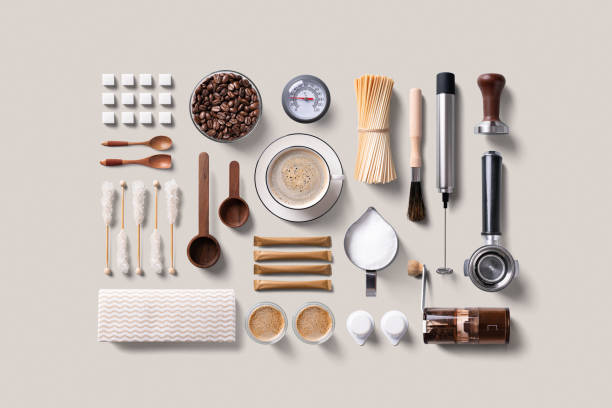
As of today, we offer various types of grinders here at CoffeeRoastCo, such as blade grinders, burr grinders, and handheld grinders. Each type has its own unique features and benefits, and understanding the differences between them can help you choose the right one for your coffee brewing needs.
-
Blade Grinders
These are the most common type of coffee grinder that works by using a spinning blade to chop the coffee beans into small pieces. However, because the blade produces heat during the grinding process, it can affect the flavor of the coffee and lead to inconsistent grind sizes.
Recommended Product: Mazzer Mini B Electronic Espresso Grinder
-
The Mazzer Mini B Electronic Espresso Grinder is a top-of-the-line blade grinder designed for use with espresso machines.
-
Features a 64mm flat burr grinding disc made from hardened steel, ensuring a precise and consistent grind every time.
-
Electronic control panel allows for customized grind settings based on preferred brewing method, and its digital display makes it easy to monitor grind time and dose.
-
Its compact size and sleek design make it perfect for home espresso setups or small cafes.
-
Hopper holds up to 1.3 pounds of coffee beans, and dispenses ground coffee directly into the portafilter of your espresso machine.
-
Removable hopper and easy access to the grinding chamber make cleaning and maintenance a breeze.
-
-
Burr Grinders
These grinders use two burrs, or abrasive surfaces, to crush the coffee beans into a uniform grind size. They offer greater precision and consistency than blade grinders and are available in both electric and manual models. Burr grinders are typically more expensive than blade grinders but offer a superior coffee brewing experience.
Recommended Product: Baratza Virtuoso+ Conical Burr Coffee Grinder
-
The Baratza Virtuoso Conical Burr Coffee Grinder is a high-quality and precise burr grinder designed for home use.
-
Features 40mm conical burrs made from hardened steel, ensuring a consistent and uniform grind every time.
-
Digital control panel allows for customized grind settings based on preferred brewing method, with an LED display that makes it easy to monitor the grind time and dose.
-
Compact size and sleek design make it perfect for home coffee setups.
-
Hopper holds up to 8 ounces of coffee beans, with ground coffee dispensed into a removable bin.
-
Unique gear-reduction system minimizes noise and heat buildup, ensuring your coffee stays fresh and flavorful.
-
Cleaning and maintenance are made easy with the removable hopper and accessible grinding chamber.
-
-
Handheld Grinders

These are small, portable grinders that are operated by hand. They are perfect for people who love camping, traveling, or those who want to grind coffee beans on the go.
Recommended Product: Sandbox Smart G1 Coffee Bean Grinder
- The Sandbox Smart G1 Coffee Bean Grinder is a premium handheld grinder that is perfect for coffee lovers who enjoy brewing coffee on-the-go.
- Adjustable ceramic burr grinding mechanism allows for a precise and consistent grind for your preferred brewing method.
- Compact size and ergonomic design make it easy to handle and store, making it an ideal choice for travel or camping.
- Equipped with a built-in scale that accurately weighs your coffee beans before grinding, ensuring the perfect dose every time. Scale is accurate to 0.1g and can measure up to 20g of coffee beans.
- Easy to clean, with a removable handle and grinding chamber for easy access.
- Made from high-quality materials and built to last, ensuring that you can enjoy your favorite coffee wherever you go.
Methods of Coffee Grinding
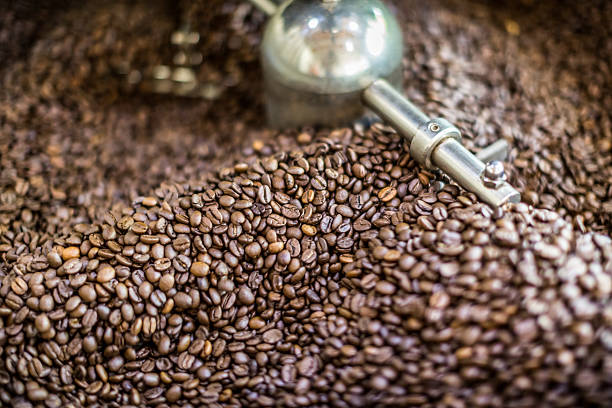
The grind size of your coffee can significantly impact the flavor and aroma of your cup of joe. That's why it's essential to understand the various sizes of coffee grinding, including coarse, medium, fine, and extra fine.
By selecting the right grind size for your preferred coffee brewing method, you can ensure that you achieve the perfect balance of flavor and aroma every time you brew a cup of coffee.
-
Coarse Grind
Coarse grind coffee beans are larger, and the particles feel gritty. This type of grind is best suited for French press or cold brew coffee.
-
Medium Grind
Medium grind coffee beans are smaller than coarse grind but still have a noticeable texture. This type of grind is ideal for drip coffee makers or pour-over coffee.
-
Fine Grind
Fine-grind coffee beans are small and powdery in texture. This type of grind is typically used for espresso makers or Moka pots.
-
Extra Fine Grind
This type of grind is even finer than the fine grind and is used in Turkish coffee. The coffee grounds are almost powdery in texture.
When grinding coffee beans, it's important to consider the type of coffee you want to make and choose the appropriate grind size. Different brewing methods require different grind sizes to achieve the best flavor and aroma.
Step-by-Step Instructions for Grinding Coffee Beans
Whether you have a grinder or not, learning how to grind coffee beans at home is a simple process that can greatly enhance your coffee-drinking experience.
Here are step-by-step instructions for grinding coffee with a grinder and without a grinder, so you can choose the method that works best for you.
Grinding Coffee with a Grinder
Step 1: Choose the right grinder
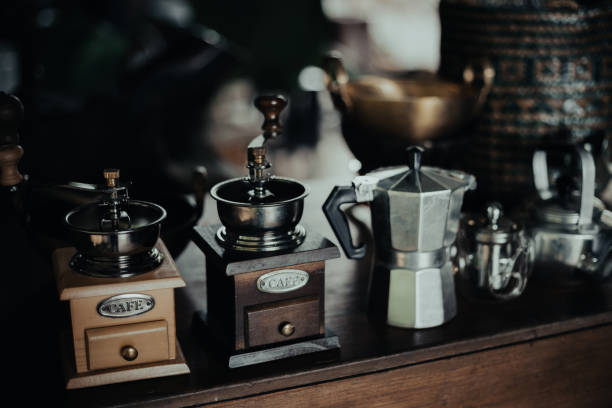
As mentioned earlier, there are two main types of grinders - blade and burr grinders.
Blade grinders are the most affordable, but they can produce inconsistent grind sizes.
Burr grinders, on the other hand, are more precise and produce a consistent grind size. If you're looking for a high-quality cup of coffee, a burr grinder is the way to go.
Step 2: Measure the beans
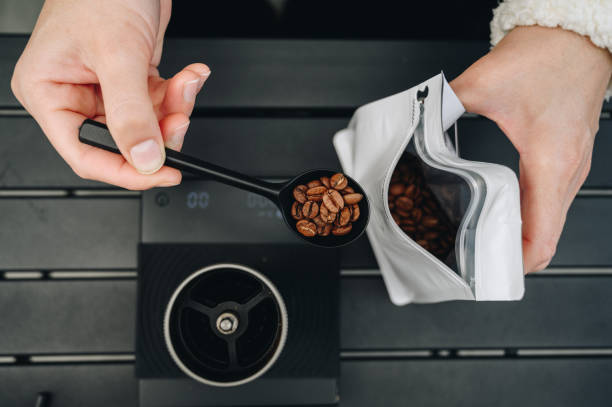
Before you start grinding, measure out the amount of coffee beans you need based on the amount of coffee you want to make. A general rule of thumb is to use 1-2 tablespoons of coffee per 6 ounces of water.
Step 3: Adjust the grind size
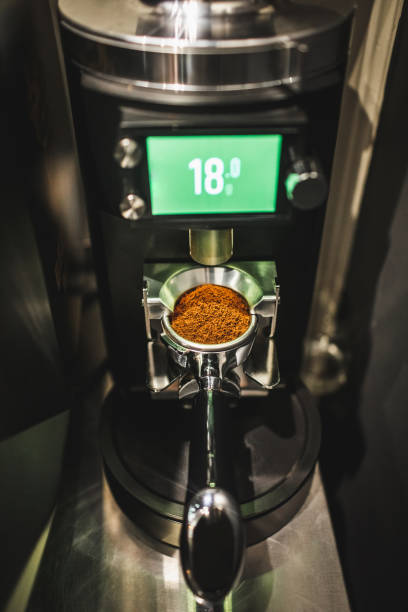
Adjust the grinder's settings to the desired grind size based on your brewing method. A finer grind size is typically used for espresso, while a coarser grind size is used for French press.
Step 4: Grind the beans

Once you have your grinder set up, it's time to grind the coffee beans. Place the beans in the grinder, turn it on, and let it grind until you've achieved the desired consistency. Make sure to shake the grinder occasionally to ensure an even grind.
Step 5: Use the ground coffee
Once you've finished grinding the coffee beans, use them immediately to make your coffee. Freshly ground coffee has the most flavor, so it's important to use it right away. If you have leftover ground coffee, store it in an airtight container in a cool, dark place.
Grinding Coffee Without a Grinder
Choose the right method: There are several ways to grind coffee without a grinder, including using a rolling pin, a mortar and pestle, or a blender. Choose what works best for you based on the tools you have available.
Step 1: Measure the beans

Measure out the amount of coffee beans you need based on the amount of coffee you want to make.
Step 2: Choose the method

-
Rolling Pin:
-
Place coffee beans in a plastic bag
-
Use a rolling pin to crush the beans until desired consistency is reached
-
-
Mortar and Pestle:
-
Grind coffee beans using the pestle until desired consistency is reached
-
-
Blender:
-
Pulse coffee beans until desired consistency is reached
-
Be careful not to overheat or over-blend the beans.
-
Step 3: Check the consistency
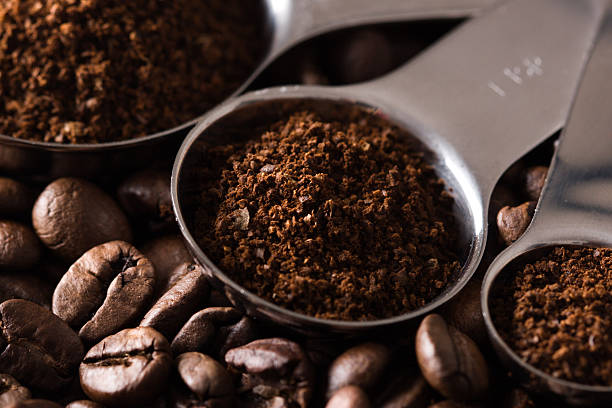
Once you've ground the coffee beans using your chosen method, check the consistency to make sure it's consistent enough for your brewing method.
You don't want a mix of fine and coarse particles, as this can negatively impact the flavor of your coffee.
Step 4: Use the ground coffee

Maximize the flavor and aroma of your coffee by indulging in the freshly ground beans. Once the grinding process is complete, waste no time in brewing your coffee for a delightful experience. However, if you end up with excess ground coffee, ensure to store it properly in an airtight container in a cool and dark spot to preserve its freshness for future use.
In Conclusion
Grinding coffee beans is a simple process that can greatly enhance your coffee-drinking experience. Whether you prefer a coarse or fine grind, using a burr or blade grinder, or even grinding your coffee beans without a grinder, there's a method that will suit your needs.
By taking the time to grind your own coffee beans, you can enjoy a fresher and more flavorful cup of coffee.
We hope this beginner's guide has been helpful in teaching you the various methods of grinding coffee beans. If you have any questions or would like to share your own tips and tricks, please leave a comment below.
Don't forget to share this guide with your friends and family so they can also enjoy a freshly ground cup of coffee!





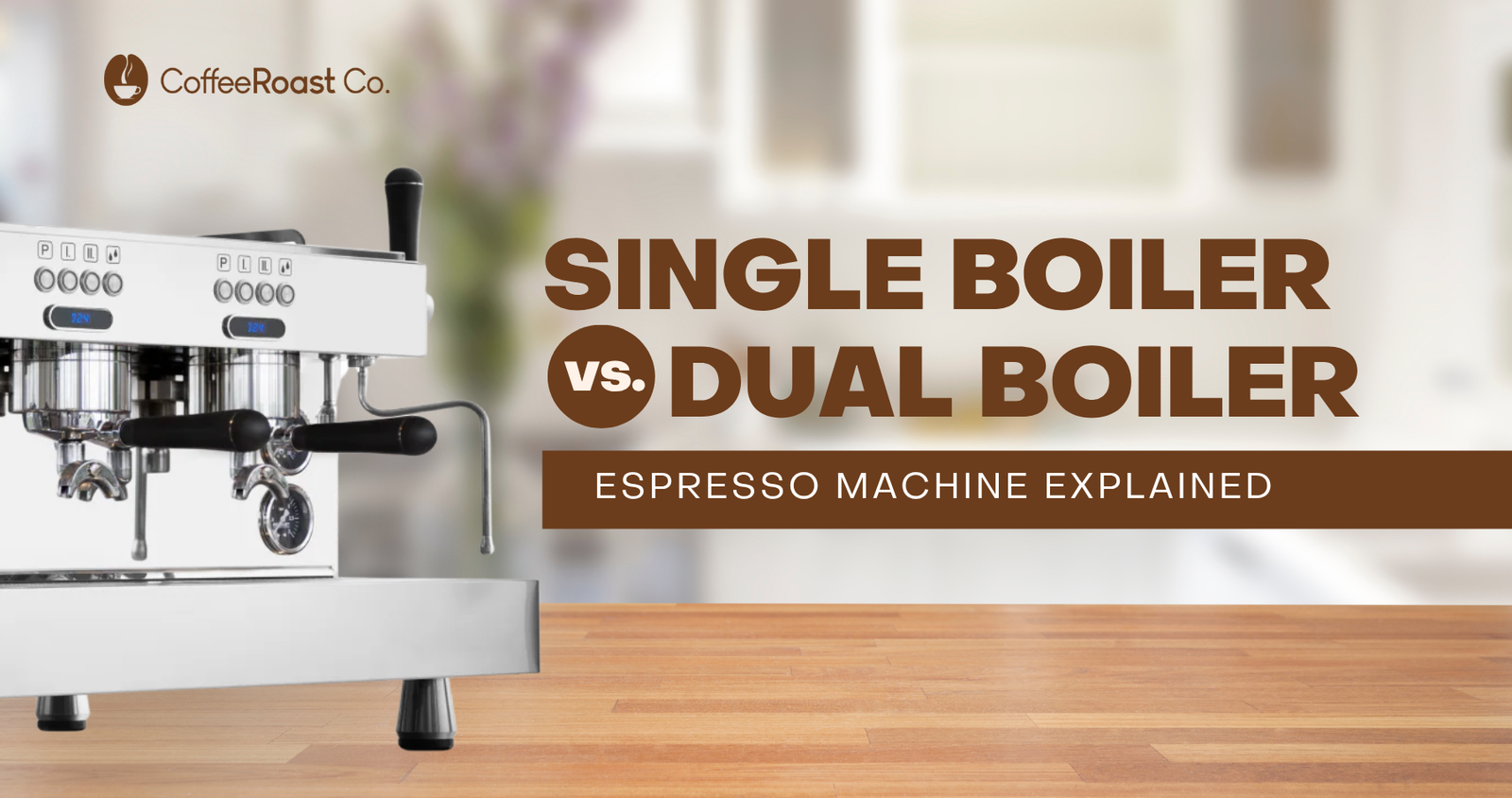

Leave a comment